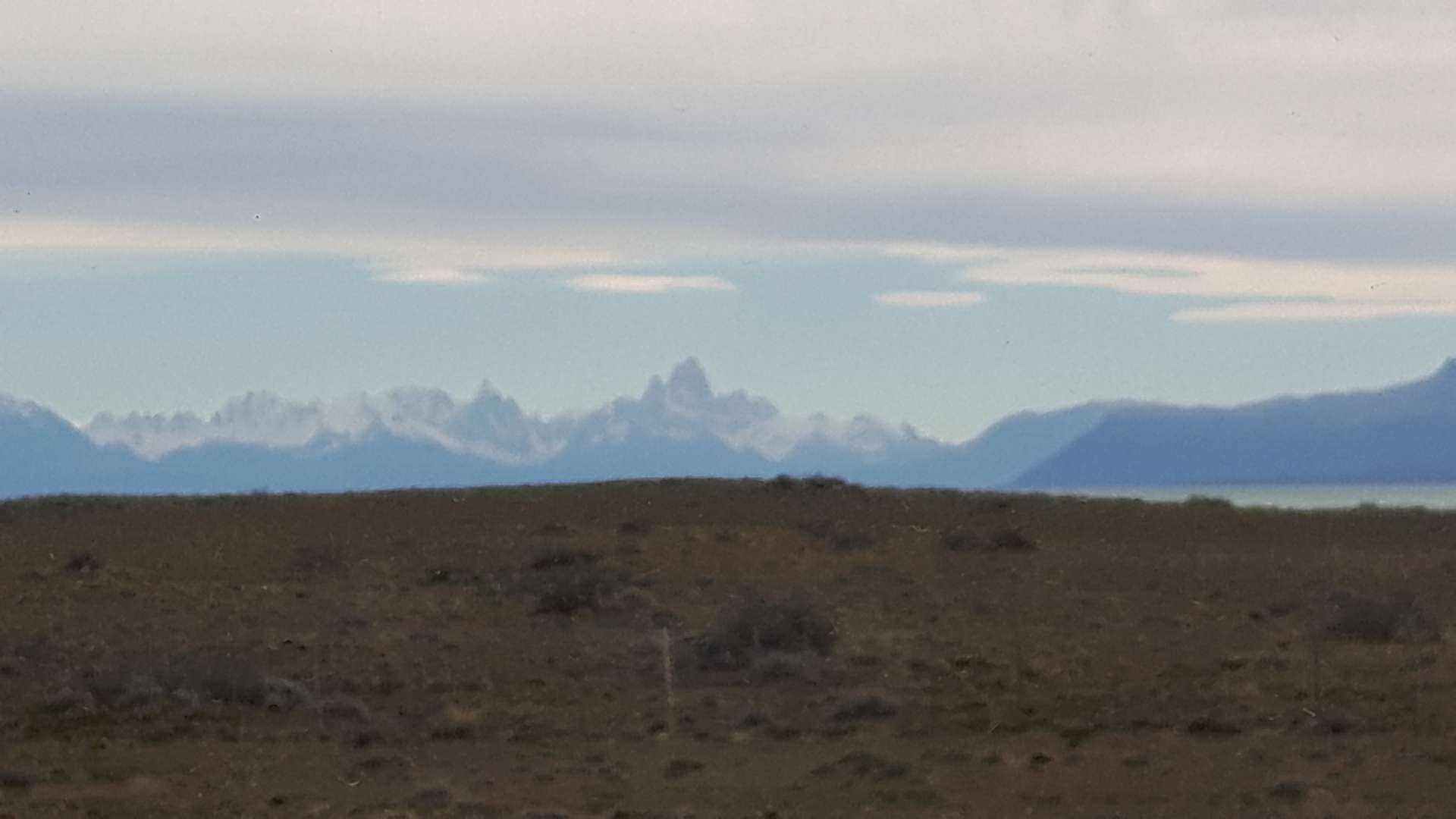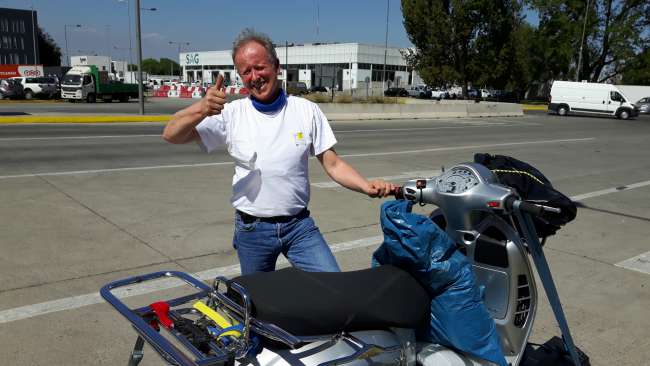from 31.07.: Ollantaytambo - 2,800 m
Nai-publish: 02.08.2017
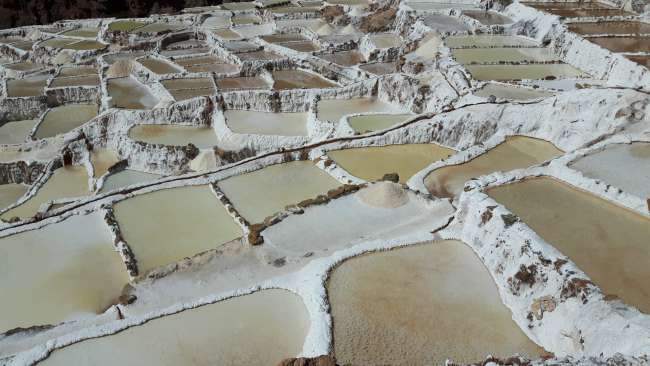
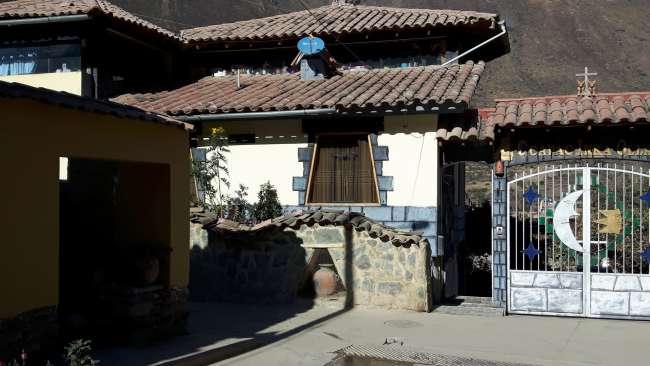
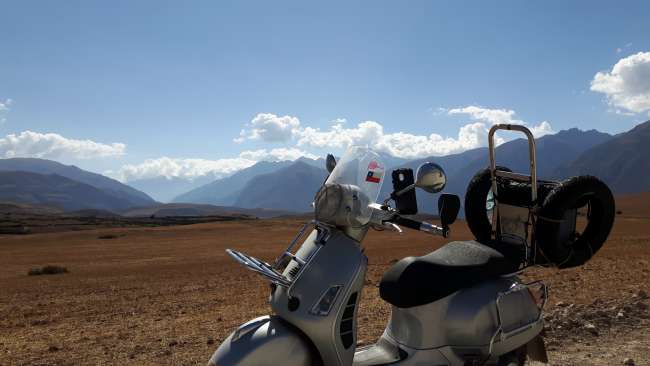
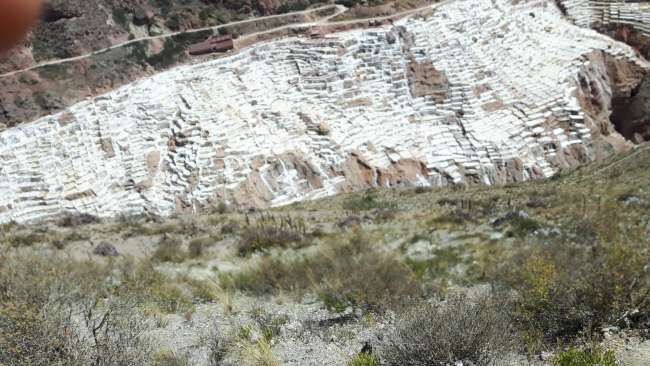
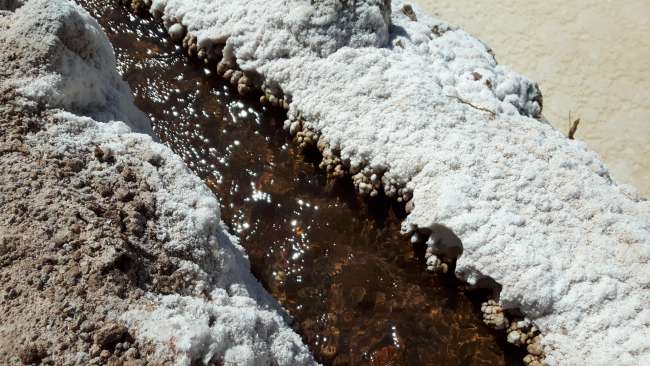
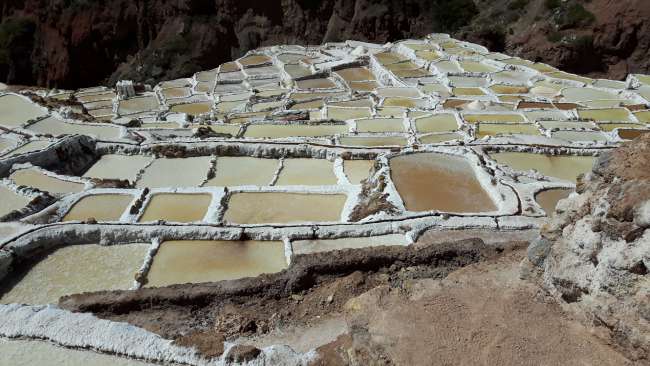
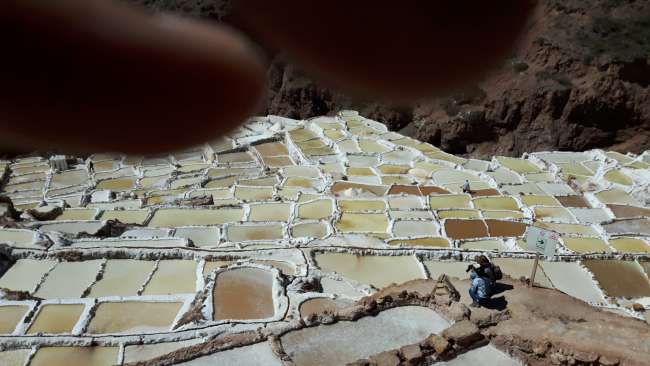
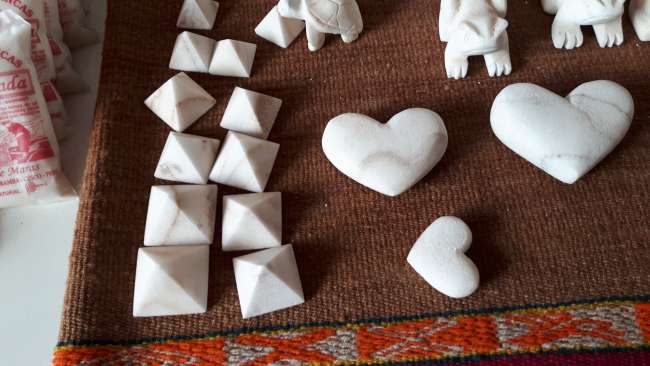
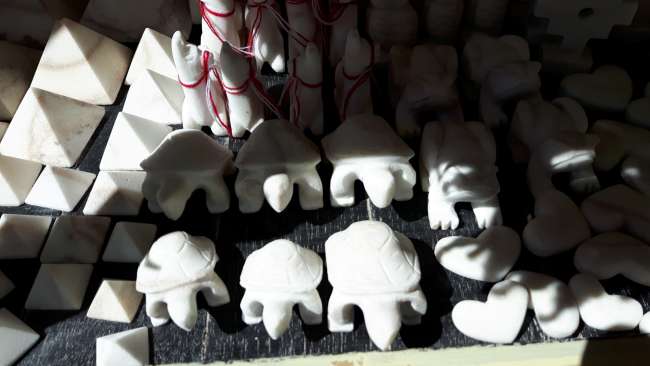
Mag-subscribe sa Newsletter
31.07.
at 06:00 am, the luxury is over. The vespa is sent back onto the street, but monitored by a camera in case the robber Hotzenplotz tries to tamper with it.
I lay back down after the action - it's horribly cold in the hostel. Three hours later, the sun is shining, the door is wide open, and the receptionist is sitting bundled up with a blanket and a thick jacket in front of the computer.
The breakfast offers everything. I dive into the oats with a craving, even though there's no fruit, but it doesn't matter.
The taxi driver is a bit overwhelmed because he has never received such a request before. I finish up the last few things as he arrives and he quickly walks towards the hostel entrance. He confirms the destination with my hostel senora and now knows where I want to go, but with the least amount of inclines possible. Everything goes as planned and twenty minutes later we say goodbye.
The ride through the Sacred Valley is a delight. Surprisingly few white Renault Sprinters loaded with tourists overtake me, the descent is tiring, lots of switchbacks, and then again the bumps on the road that are only visible upon closer inspection and often require me to brake hard lassen.
es is not far to Ollantaytambo. 70 km, but it takes Google Maps an hour and a half. The Rio Urubambu, which has now become a serious river, is my companion, as well as the Märklin railway tracks for the train that takes tourists to Aguas Calientes.
Ollantaytambo means translated storehouse of my god and is still in its original state. The Inca terraces with the remaining foundations and the terraced fortress. Ollantaytambo greets me in the most unfriendly manner! The road that leads to the village with an estimated 2,000 inhabitants consists of boulders, with the upper third sticking out of the road surface, making it impossible to drive reasonably.
The vespa can no longer stay in the lane because the front wheel has found its own dynamics and only obeys the rider through very slow driving.
I am not alone on this road, my white friends are piling up behind me, eager to overtake me. The calle principal continues, I feel sorry for the residents who have to endure this traffic every day.
At the Plaza de Armas, traffic is congested, the tourist police are trying to bring order to the chaos, but few pay attention to the warning or encouraging whistles, instead making eye contact with other drivers. I pass the waiting Sprinters and buses, wait for the whistle, and leave as quickly as possible.
Sandra and Rolf gave me the address of a hotel that I want to try out. Not a hostel, but a hotel. The last three weeks in hostels, mostly with 7 other beds, have exhausted my tolerance for frustration. And indeed, there is still a room available. The staff member, dressed in a white shirt and black pants, looks suspiciously at the vespa and then at me, and first tells me the price. 50 dollars. Hm 150 soles - I have never paid that much here before, but it doesn't matter, I nod to him and he opens the wrought iron gate and shows me where I can park the vespa.
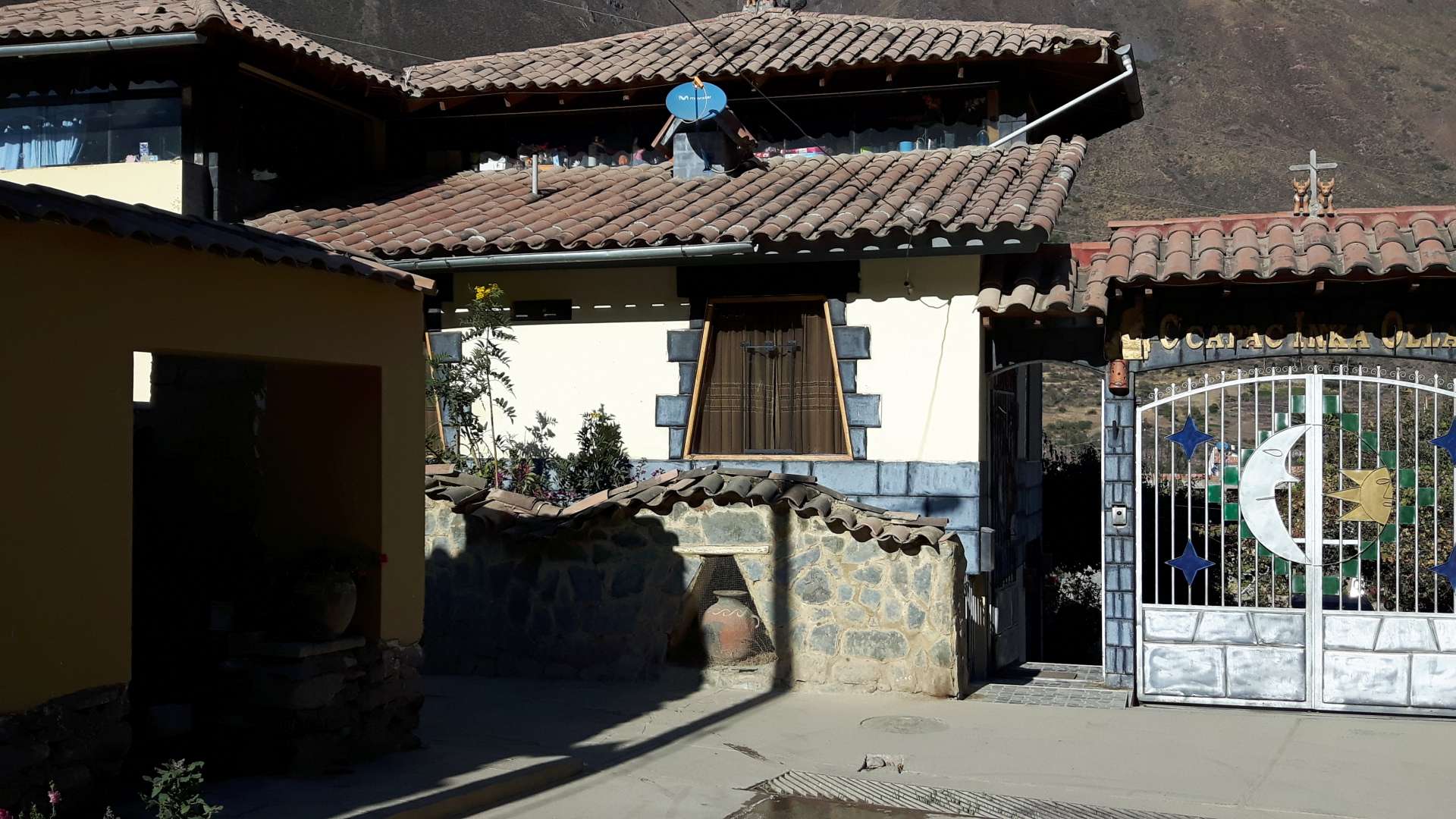
Trapezoidal windows, beautifully shaped tiled roofs, and walls built in Inca style
You can see that someone put thought into it. This someone is a German from the Sauerland region who met his current wife on a motorcycle tour through South America and together they set up the hotel. They have been married for 40 years, and the young couple meets the guests on a poster that stretches from floor to ceiling. He in a white suit and his wife in Peruvian attire.
Another young man joins me and asks if I want a beer. It crosses my mind that it costs 5 dollars - well, a good idea. He brings me the beer, walks away again, I grab an old wooden chair, sit in the sun, and know that I will relax and be pampered here. As I doze in the sun, the lady of the house appears, addressing me in German and proudly showing me tomatoes hanging from a tree, passion fruit, and offering me a big fig to taste. She tells me about her happiness - I can't describe it any other way - she thrives in her hotel. She has a little son with her husband, a grandson, a son from a previous marriage, and a cousin. Both of them actively help at the hotel.
In the evening, I have llama brought to me on a hot stone, before that a ceviche - which is raw fish with onions - the main course is accompanied by a proper salad and fried potato wedges.
The metabolism is working again, I'm hungry and will sleep well.
I am looking forward to breakfast - muesli with fresh fruits, Earl Grey tea, salted butter, and rolls. If requested, also very delicious looking fried eggs, but unfortunately, the abundant muesli has stolen the show from them. There's no more space for anything. I meet Kalle, the proud hotel owner. He tells me about a full booking for the following night, which unfortunately ruins my plan to extend for another night. A van with French tourists is coming, even the guide has to find another place to stay. He is well represented in the relevant forums, renovation plans confirm that business is booming. He tells me that his son can finally go back to school. Peruvian teachers have been on strike nationwide for more than 6 weeks. For higher wages and reimbursement of expenses for school materials. This also explains the street demonstration on my way to the Inca temple at my stop in Sicuani. The summer vacation will be canceled because the strike time must be made up. The state school system is in a dire state. Most parents send their children to private schools.
After breakfast, I go with his wife to another hostel, where I can stay for the second night. It's 70 soles, which is a lot, but it's private with its own bathroom. On the way there, she tells me about her life before Kalle. She was alone for 10 years, then she met the German motorcyclist and immediately fell in love. She bragged to her friends: look, this beautiful man!!
Kalle offers to let me leave my vespa and any belongings I don't need at the hotel or on the hotel grounds. A very nice gesture that saves me from moving completely.
Today I want to go to the Maras Salinas, which are only 25 km away from here. I unload the vespa from luggage and accessories, struggle through the overcrowded Ollantaytambo, and climb up to 4,200 meters behind Urubamba. For a while, I stay on the plateau, enjoying the great view of the Sacred Valley, and after half an hour, a sign shows me that I need to turn right. And that's the end of peaceful driving. Although the view of the mountains is unique, the asphalt is replaced by corrugated gravel, and I bump along at 20 to 25 km/h, avoiding sharp rocks and potholes.
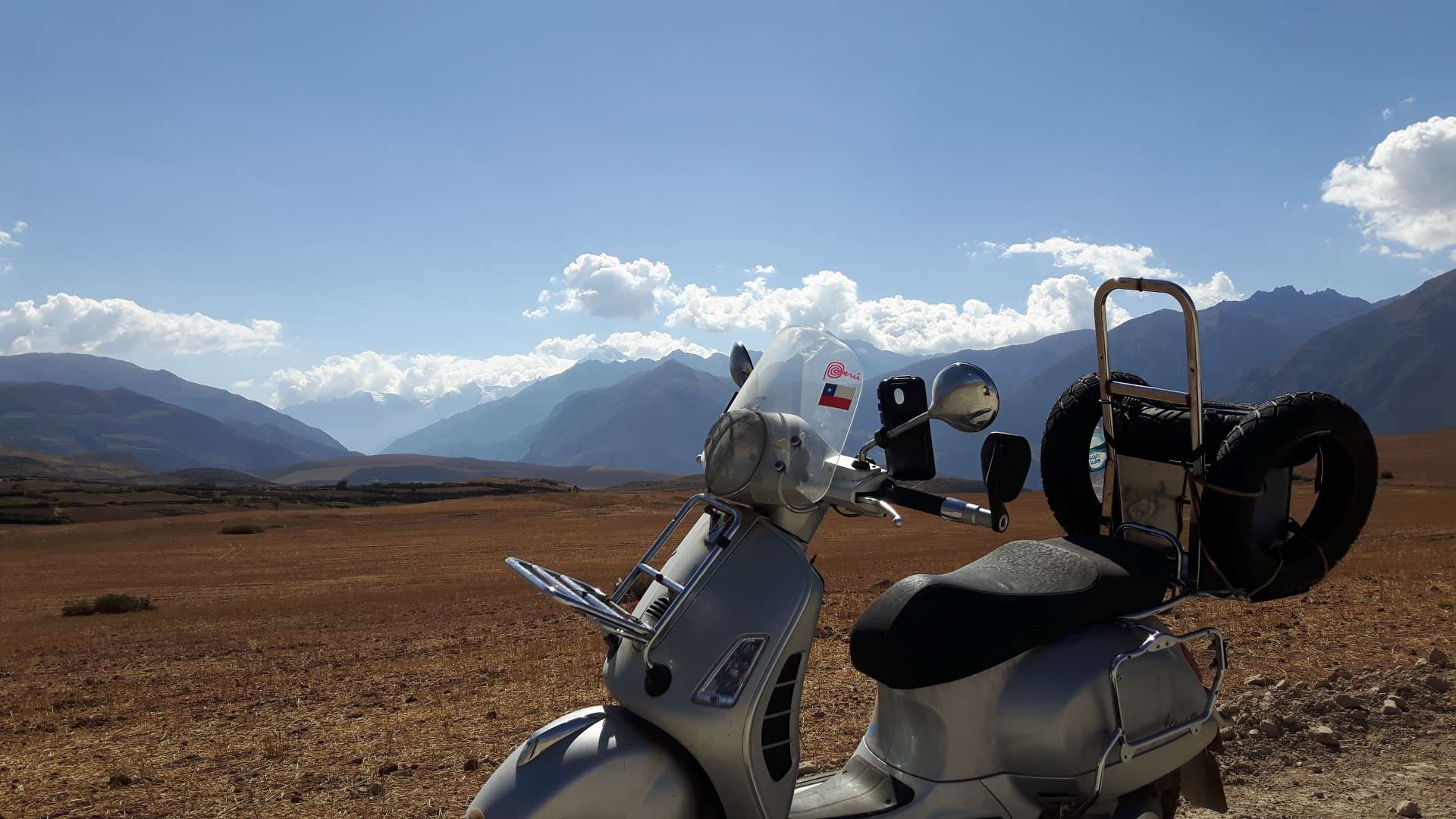
My white friends are back too. And they wouldn't be my friends if they didn't overtake me and leave me in their dust cloud.
We leave the plateau and roll down into the valley, where I can already catch a glimpse of the Maras Salinas from above.
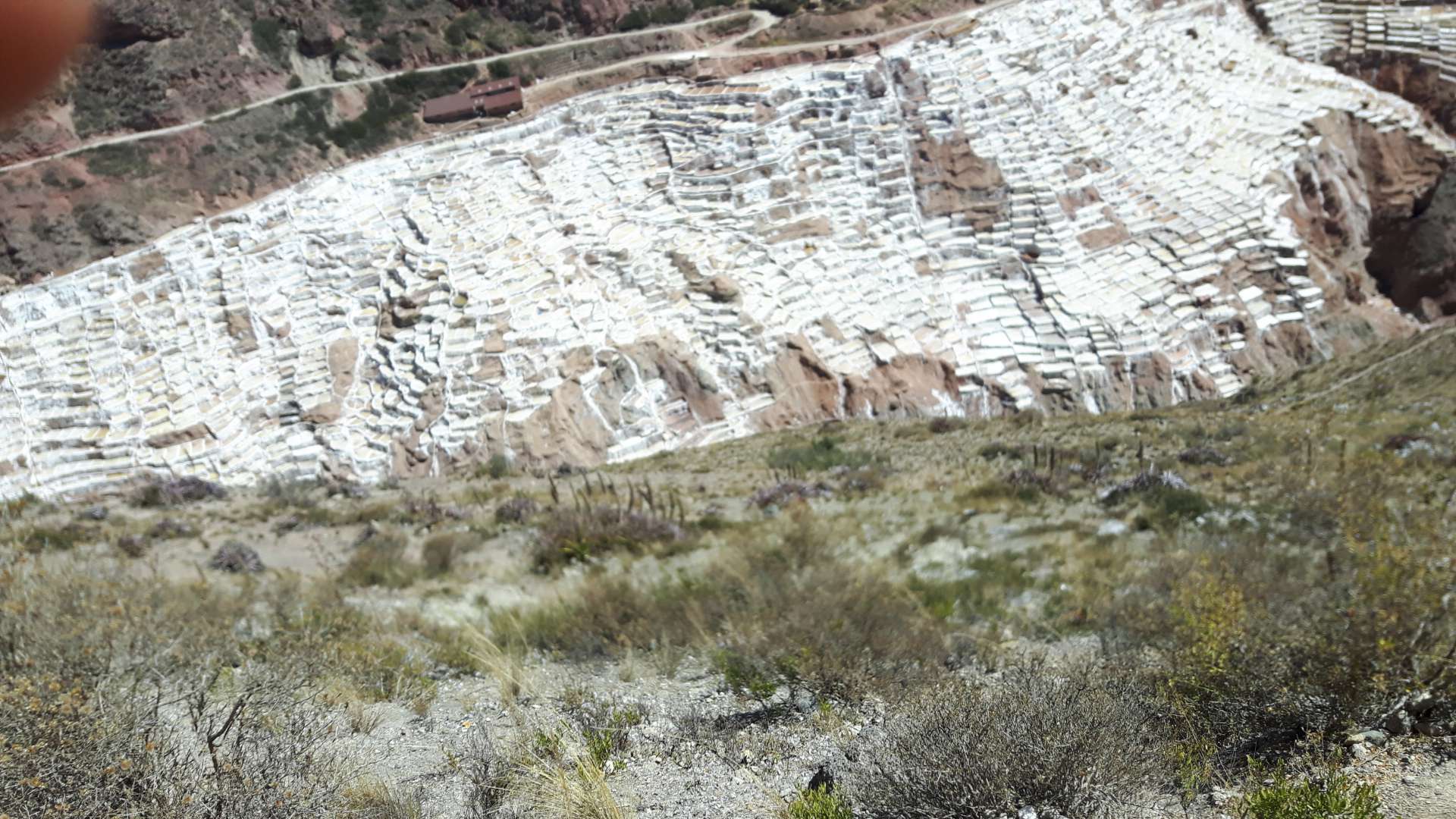
'Yes!' I say and follow the dust-raising Sprinters, overtaking them at the wildest spots. Soon it's done, I find a shady parking spot directly under a slightly protruding rock - no, a clay massif, look critical upwards, already see the first cracks, but I'm not discouraged, instead, I focus on the salt terraces. It was worth it. I haven't seen anything like this before, I simply ignore the photographing and posing tourists, walk past them briskly, let myself be guided through shopping malls, and finally I'm there. Built into the hillside in terraces, I look at water basins that show the different colors and stages of their contents. The saltwater comes from the mountains and is led into the basins through a perfect pipe system, where it evaporates and is harvested.
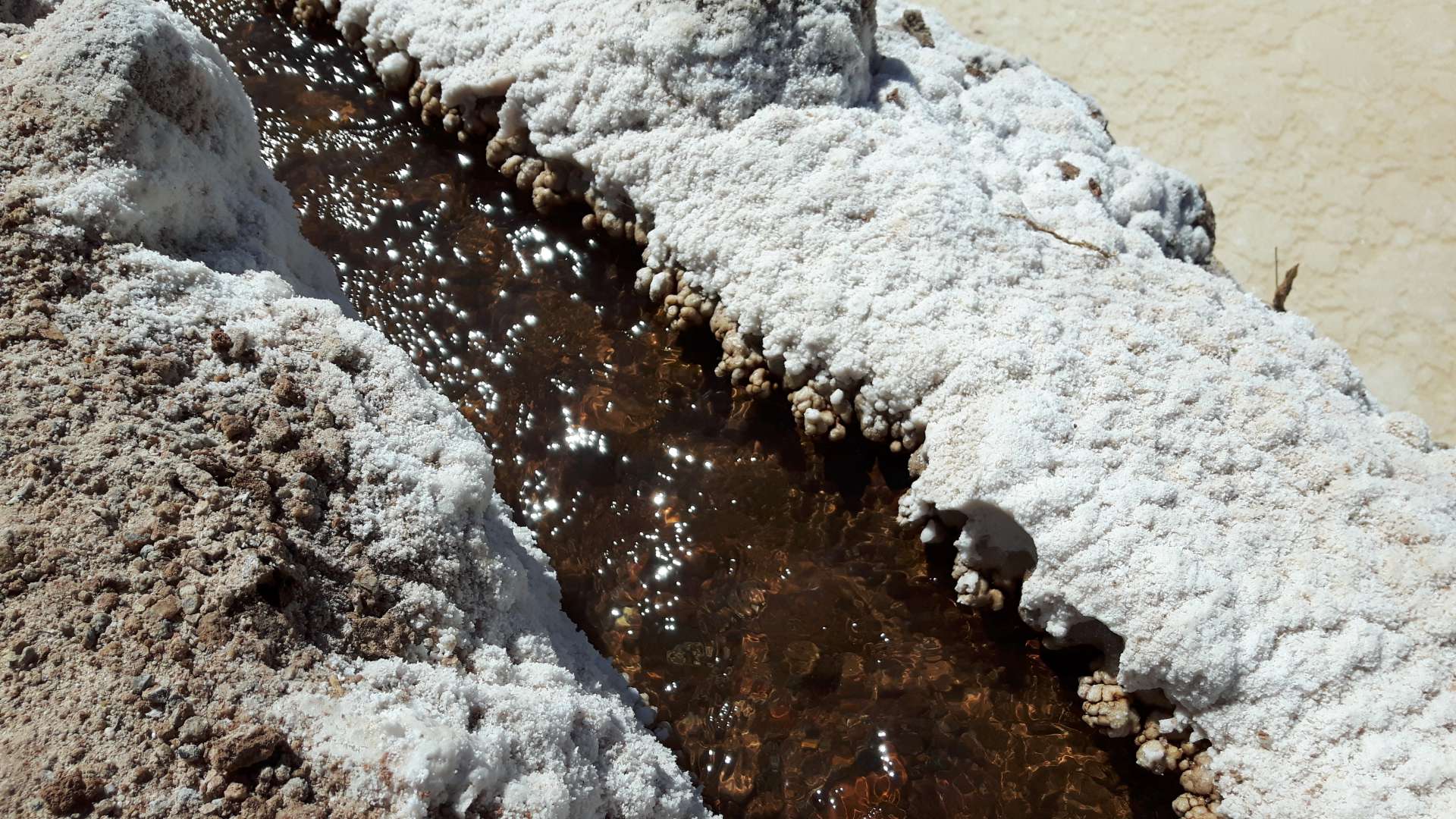
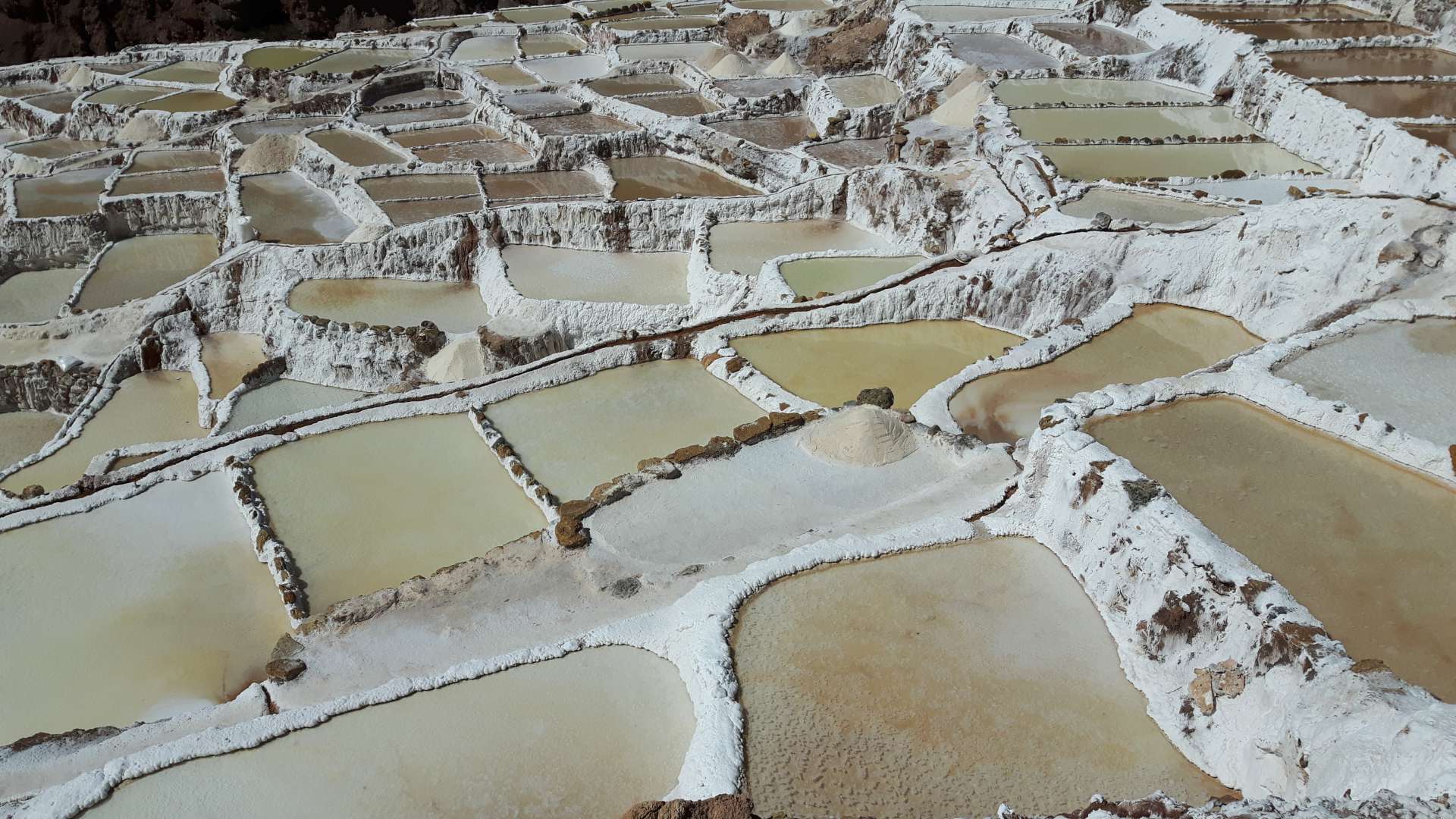
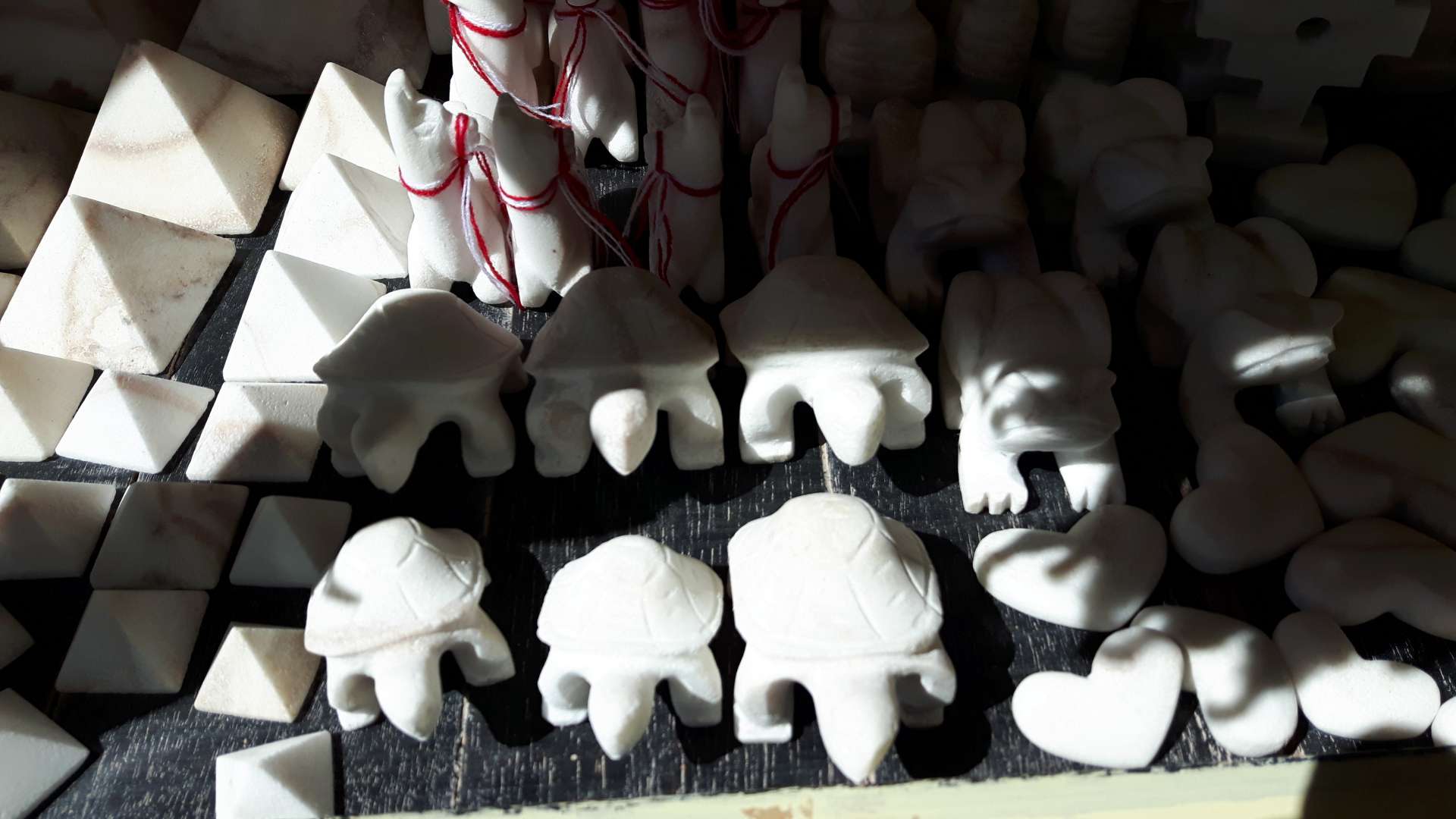
Salt harvesters can be seen from a distance, filling dried salt into bags. These are then sold in Cusco.
Okay. I've seen everything, I'm slightly concerned about the breakpoint and the steep ascent that I can only recognize from down here. Plus, I've had enough. Just want to get away. I quickly take another photo of what else you can do with salt and hurry back to the vespa.
She enjoys the coolness of the shade, I'm sure the breakpoint crack has changed, I start the vespa and gain traction. She handles the climb with ease once again, the line of Sprinters dissolves, and soon I find myself alone in complete silence. I pause, turn off the engine, and look around. The high plateau with its mountain massifs in the background, the expansive, steppe-like fields, and the smell of savory herbs. The peace doesn't last long, the dust fountains approach, I protect myself with a helmet and visor, and soon I'm back on paved ground. The line of Sprinters turns right to the summer residence of the Inca, I drive in the other direction. It's still 12 km to go. And since I don't know the road conditions or the heights that await me, and I sensibly left all canisters at the hotel, I drive back to Urubamba, buy some fruit there, find a shady spot a little off the main road, enjoy my self-determined journey, nod approvingly to a beetle driver in his souped-up vehicle, receive a wave and proud grin in return, a motorcyclist slows down, turns around, greets me, and continues on. That's how it should be. I sit there, peel my mandarins, bananas, and pineapples, and enjoy my individuality.
When I return to the hotel, I order a beer from my gate opener while sitting on the vespa, meet Kalle again, and then sit in the afternoon sun. It's very pleasant temperatures, the shade is far more enjoyable than the fridge-like temperatures in Cusco. Kalle still has to go to Urubamba, but he suggests that we could have a beer around 6:00 pm. But that doesn't work out because his wife meets a friend in town...
I end the evening in my new hostel with some writing. Tomorrow I will continue my journey. I am well aware that I have committed a sacrilege. No tourist activity in Ollantaytambo, no climbing of the fortress, no photos - the perfect antitype!
Mag-subscribe sa Newsletter
Sagot

Mga ulat sa paglalakbay Peru
